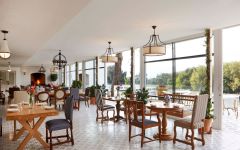Boschendal Brut
-
Wine &
Spirits



Product Details
Your Rating
Somm Note
Winemaker Notes
This wine is pale gold with a flourish of delicate bubbles. On the nose Enticing lemon cream and almond biscotti precede a soft explosion of zesty lemon and orange peel. On the Palate, It is appealing delicate citrus and notes of tropical fruit. Maturation on the lees provides a well-rounded creamy mouth feel with detectable minerality, good balance and a seamless finish. Aging potential enjoy in the freshness of its youth.
Professional Ratings
-
Wine & Spirits
This wine’s pretty pear and orchid-blossom core has a quiet gravity. At the high end of brut, its gentle texture and perfumed flavors would match my ideal French fries, crackingly crisp on the outside and fluffy inside.






Boschendal (Dutch: wood and dale) is one of the oldest wine estates and farms in South Africa and is located between Franschhoek and Stellenbosch in South Africa’s Western Cape. Boschendal is a quintessential model for holistic country living. The team's vision is that the winery's future will be as remarkable as the past. It is the people that give life to Boschendal and their dream is that this extraordinary Estate will forever be a treasured home filled with new generations who will love and care for this icon of the Cape through this century and beyond.
The farm’s title deeds are dated 1685. The estate’s first owner, Jean le Long, was one of the party of 200 French Huguenot refugees who were fleeing religious persecution in Europe. A stunning property, the Boschendal estate is crowned by the original Cape Dutch manor house, which is open to visitors, together with associated restaurants and outbuildings and visitor attractions. The estate includes the Manor House, the Verf Restaurant, a café/deli, historic gardens and luxury accommodation.
The vineyards at Boschendal cover 2.54 km between Groot Drakenstein and Simonsberg, and include substantial plantings of Chardonnay and Sauvignon blanc, together with smaller plantings of Cabernet Sauvignon, Merlot and Shiraz. Contract vineyards are located throughout Western Cape, with a large concentration in the region of Elgin to focus on Pinot Noir and Chardonnay.

A term typically reserved for Champagne and Sparkling Wines, non-vintage or simply “NV” on a label indicates a blend of finished wines from different vintages (years of harvest). To make non-vintage Champagne, typically the current year’s harvest (in other words, the current vintage) forms the base of the blend. Finished wines from previous years, called “vins de reserve” are blended in at approximately 10-50% of the total volume in order to achieve the flavor, complexity, body and acidity for the desired house style. A tiny proportion of Champagnes are made from a single vintage.
There are also some very large production still wines that may not claim one particular vintage. This would be at the discretion of the winemaker’s goals for character of the final wine.

With an important wine renaissance in full swing, impressive red and white bargains abound in South Africa. The country has a particularly long and rich history with winemaking, especially considering its status as part of the “New World.” In the mid-17th century, the lusciously sweet dessert wines of Constantia were highly prized by the European aristocracy. Since then, the South African wine industry has experienced some setbacks due to the phylloxera infestation of the late 1800s and political difficulties throughout the following century.
Today, however, South Africa is increasingly responsible for high-demand, high-quality wines—a blessing to put the country back on the international wine map. Wine production is mainly situated around Cape Town, where the climate is generally warm to hot. But the Benguela Current from Antarctica provides brisk ocean breezes necessary for steady ripening of grapes. Similarly, cooler, high-elevation vineyard sites throughout South Africa offer similar, favorable growing conditions.
South Africa’s wine zones are divided into region, then smaller districts and finally wards, but the country’s wine styles are differentiated more by grape variety than by region. Pinotage, a cross between Pinot Noir and Cinsault, is the country’s “signature” grape, responsible for red-fruit-driven, spicy, earthy reds. When Pinotage is blended with other red varieties, like Cabernet Sauvignon, Merlot, Syrah or Pinot Noir (all commonly vinified alone as well), it is often labeled as a “Cape Blend.” Chenin Blanc (locally known as “Steen”) dominates white wine production, with Chardonnay and Sauvignon Blanc following close behind.
